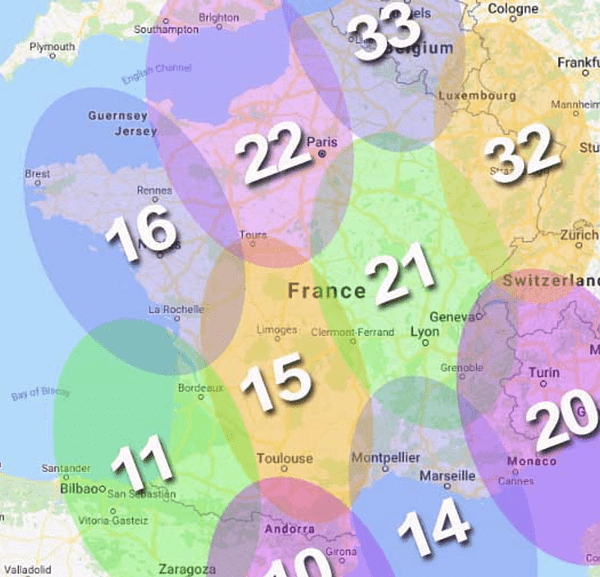Wireless Spectrum: Real Estate in the Sky
All wireless operators need RF spectrum: dedicated radio frequencies that carry TV, GPS, mobile broadband and other invisible signals through the air. But with the ever-increasing use of smartphones and tablets, and the rise of 5G, the demand for spectrum is far greater than supply – and this precious resource is finite.
So how is wireless spectrum controlled and allocated, how do operators secure it, and what comes next?
Spectrum landlords
The International Telecommunications Union (ITU) regulates communication spectrum globally and tries to ensure it’s used in the most efficient way possible. The ITU generally assigns spectrum for services such as 5G and satellite constellations to countries that, in turn, use their own regulatory bodies to distribute it internally. We have Industry Canada here at home, and the U.S. has the Federal Communications Commission (FCC).
Wireless spectrum licenses come with annual fees, and when demand is particularly high, like for mobile broadband, regulators hold “spectrum auctions” that can generate billions of dollars for the governments involved. At the end of the day, a wireless operator must work with these regulators to secure the spectrum they need to operate their business.
Frequency sweet spots
The ITU attempts to reserve certain spectrum for certain services. For example, the 800 MHz band is ideal for mobile operators as the signals can penetrate buildings and provide coverage indoors. Higher spectrum frequencies, on the other hand, are typically allocated to satellite operators. These frequencies allow them to use smaller and lighter components – and every kilogram in space counts.
“Bring into use”
Once spectrum has been acquired, a “bring into use” (BIU) clause comes into force. This is a means to ensure that an operator uses the spectrum assigned in a reasonable amount of time – or else they forfeit their license. BIU essentially prevents operators from monopolizing spectrum to eliminate competitors. For satellite operators, this BIU clock is typically two years, which is a tight schedule if you need to build and launch a satellite from scratch.
Landing rights
Satellite constellations are global – and most operators don’t want to restrict their services to just the one country where they secured their spectrum license. To be allowed to operate in multiple countries, however, they need to apply for “landing rights” in each. This can take a lot of time, and acceptance is not guaranteed. Countries are sometimes hesitant to grant landing rights to foreign operators for both economic and security reasons. All of these factors need to be carefully considered when launching a global wireless service.
Avoiding RF interference
RF interference in spectrum is a key issue. Two operators using the same spectrum in the same area can disrupt each other’s services to the point where they can no longer operate. To avoid this situation, the operator who gets their license first has precedence – and any follow-on licensees must coordinate with the first to ensure their re-use of the spectrum won’t cause interference. Physical distance, power levels, and frequency diversity are possible solutions to interference issues.
Spot beams can also help operators re-use spectrum by ensuring no adjunct spots use the same frequency. The picture below illustrates a spot beam network, where each color depicts different spectrum:

Spectrum shortage
The radio frequency spectrum is already so full that regulators have declared a spectrum shortage. The ITU, FCC, Industry Canada and others are looking at ways to free up additional spectrum to meet demand.
TV broadcasters with unused or underused spectrum, for example, are being asked to sell it to mobile broadband providers in an auction and share in the profits. Governments are giving up spectrum for commercial use. And Q and V bands are opening to provide more spectrum for satellite communications.
Summary
Spectrum – invisible and finite – is the foundation of any wireless operator’s business. Once you secure a license, meet the “bring into use” clause, acquire landing rights and coordinate with your neighbors, you still need to be able to use it efficiently. This is where Orbital Research comes in. We have a wide range of frequency converters to help to get the maximum value from your slice of real estate in the sky.
